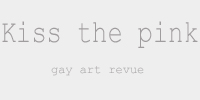‘In the beginning was nature. The background from which and against which our ideas of God were formed, nature remains the supreme moral problem. We cannot hope to understand sex and gender until we clarify our attitude toward nature. Sex is a subset to nature. Sex is the natural in man.
‘Society is an artificial construction, a defence against nature’s power. Without society, we would be storm-tossed on the barbarous sea that is nature. Society is a system of inherited forms reducing our humiliating passivity to nature. We may alter these forms, slowly or suddenly, but no change in society will change nature. Human beings are not nature’s favourites. We are merely one of a multitude of species upon which nature indiscriminately exerts its force. Nature has a master agenda we can only dimly know.
‘Human life began in flight and fear. Religion rose from rituals of propitiation, spells to lull the punishing elements. To this day, communities are few in regions scorched by heat or shackled by ice. Civilized man conceals from himself the extent of his subordination to nature. The grandeur of culture, the consolation of religion absorb his attention and win his faith. But let nature shrug, and all is in ruin. Fire, flood, lightning, tornado, hurricane, volcano, earthquake—anywhere at any time. Disaster falls upon the good and bad. Civilized life requires a state of illusion. The idea of the ultimate benevolence of nature and God is the most potent of man’s survival mechanisms. Without it, culture would revert to fear and despair.’
Sexual Personae | Camille Paglia
Camille Paglia | AI | Germaine Greer
But it is crucial to recognize that these representations are not neutral. They are often shaped by patriarchal biases and reinforced by societal power structures. The ideal image of the boy nude in art has been used to commodify and objectify the male form, perpetuating harmful stereotypes about masculinity and reinforcing the notion that the male body is the standard of beauty and power.
This narrow, idealized representation of the male body disregards the true diversity and complexity of human anatomy, presenting a sanitized and sexualized version that reinforces unrealistic expectations and limitations for men. This reinforces a harmful notion that there is a single, correct way for the male body to look, which can lead to harmful consequences for men and boys.
But I would argue that the ideal image of the boy nude in art can be a powerful and transformative force, if it is approached with a critical and self-reflective eye. By exploring the diversity of the male form and recognizing the complexity and individuality of each body, we can break down harmful stereotypes about masculinity and empower men and boys to embrace their true selves. The ideal image of the boy nude in art can be a source of inspiration and liberation, if we are willing to see beyond the patriarchal biases that have shaped it.
Beautiful Boy
I was introduced to Camille Paglia’s Sexual Personae post-coitally with a similarly young man in my early 20s. I have never been so besotted. I worshiped physically every inch of him. (Morally he was corrupt. Intellectually he was unformed.) He was dirty. As such – he was the missing link.

















